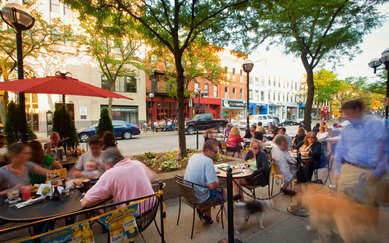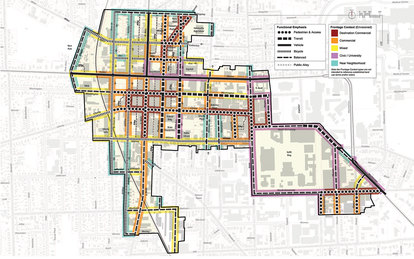Ann Arbor Downtown Street Framework
The way we plan and experience our cities has been dictated by the automobile for the better part of a century. Thankfully, those paradigms are all being challenged by incredible opportunities associated with the new mobility future. As part of this shift, SmithGroup is creatively re-thinking, adapting, and improving our streets to prioritize human contact and health, and to advance sustainability and resiliency. Ann Arbor's Downtown Street Framework creates streets that work for everyone, allowing the city to operate more cohesively, efficiently, and collaboratively.
Client
Ann Arbor Downtown Development Authority
Location
Ann Arbor, Michigan
Markets/Services
Active Transportation & Mobility, Civic, Civil Engineering, Community & Regional Plans, Landscape Architecture, Mobility, Urban Design, Urban Environments, Urban Planning
Size
67 blocks
Featured Awards
Michigan APA Planning Excellence Award for Best Practice
ASLA MI Honor Award for Landscape Planning & Analysis
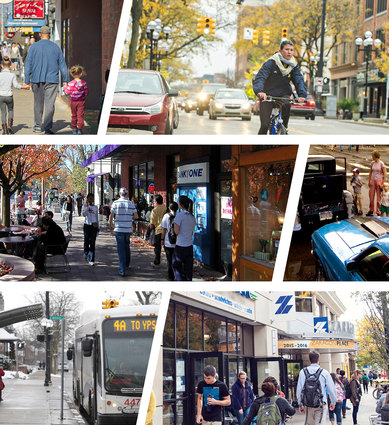
Ann Arbor’s Downtown Street Design Framework provides the public and private sectors with design standards and best practices for building and managing better downtown streets. It addresses the key roles that the street and the public right-of-way play in supporting multiple modes of transportation, along with economic vitality, environmental health, and community character.
Ann Arbor’s downtown streets each have their own personality and needs. The 67 blocks of the Downtown Development Authority (DDA) District host a variety of uses including shops, offices, and residences. There are over 100 sidewalk cafes and other areas for public seating or gathering. Downtown streets are the location for many of the events for which Ann Arbor is known. The streets also serve many demands from different users. Pedestrian volumes are heavy in many parts of downtown and bicycles are common. Auto travel is a prominent demand on the streets as is on-street parking. Many bus routes converge on the transit center and transit ridership continues to grow.
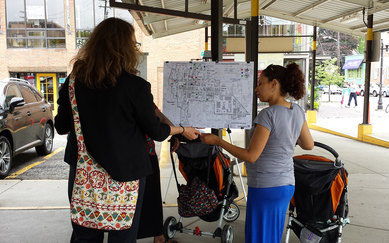
SmithGroup's approach is based on the recognition that streets need to operate on a variety of levels, supporting not just cars but pedestrians, bikes, transit, businesses, and residences, as well as special events. And each street is unique. The Ann Arbor Downtown Street Framework helps Ann Arbor’s residents reclaim their streets. As part of the process, we conducted careful analysis of the area to determine what types of streets and corridors would best support a variety of uses.
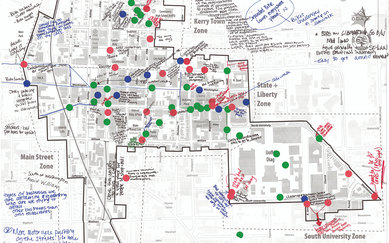
The result is a system of streets that are safe and engaging, transportation efficient, sustainable, flexible, rich in character, and accessible for all.
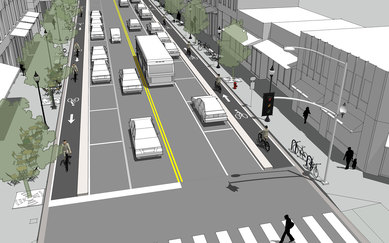
The Ann Arbor Downtown Street Framework provides a unified set of best management practices, and ensures that Ann Arbor’s downtown streets are no longer just for cars.
